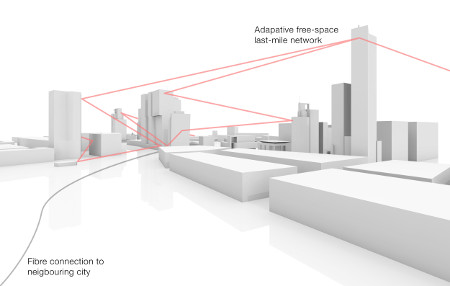‘Twisted light’ may be the key to faster wireless internet

Image: University of Glasglow
Researchers have found new ways to use “twisted light” to send data wirelessly. This could make sending the data faster than with fiber optic cables.
The research team, composed of physicists from the United Kingdom, Germany, New Zealand and Canada, published their study on Science Advances. It detailed how the scientists “twisted” individual particles of lights or photos, also referred to as optical angular momentum (OAM), to beam data through open air.
A statement from the University of Glasglow described how the process of twisting photons allowed more data to be carried along a light stream. This could give way to higher-bandwidth wireless communications technology.
OAM has been used before in wired systems and proved feasible. However, transmitting it through open air had been a great challenge. Different factors could easily affect the light beam, such as atmospheric pressure, which could scatter the beam.
In a recent experiment, the team managed to beam data over a 1.6-kilometer stretch of open space. They simulated the conditions of an urban area by passing the beam through fields, streets, and near high-rise buildings. The team saw these kinds of congested environments as ideal for high-speed wireless internet through OAM, despite the challenges.
“A complete, working optical angular momentum communications system capable of transmitting data wirelessly across free space has the potential to transform online access for developing countries, defense systems and cities around the world,” said Dr. Martin Lavery, head of the structured photonics research group at University of Glasgow and lead author of the study.
The paper titled “Free-space propagation of high dimensional structured optical fields in an urban environment” can be viewed through this link. JB
RELATED STORIES:
Experimental cellphone powered by light and radio waves
Stephen Hawking doctorate thesis now available for public viewing
Google Maps now allows users to explore planets and moons